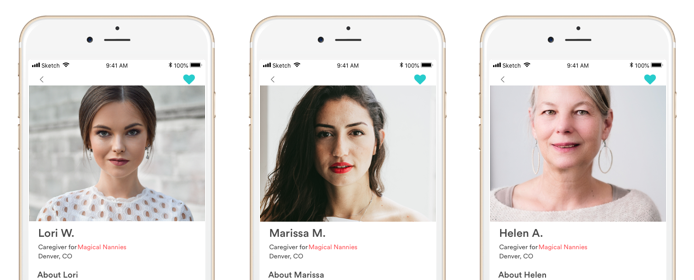Best Practices for Caregiver Profiles
You only get to make a first impression once, so you want to make it count. One of the first things clients will see are your caregivers’ profiles. These don’t just represent each caregiver- they represent your business so it’s important they come across professionally. There are two main elements of their profiles to consider: Profile Picture & Personal Bio
Profile Picture
Pictures say a lot about a person. Here are a few ideas you can use to help your team shine:
- Simplify the outfit. The easiest way to make your caregivers look like a team is to have them wear a standard outfit. A company t-shirt is a great way to do this, but if you don’t have one you could even have them all wear the same color to provide consistency.
- Standardize the background. Another way to bring cohesion to your team is to have a standard background in their pictures. This helps ensure there isn’t anything inappropriate in the background and also brings a level of consistency to your clients’ experiences. This can be as easy as taking everyone’s picture in front of a wall in your office. Sound too boring for your team’s personality? You can mix it up by taking the pictures at an outdoor location so they still have the same look and feel but with a bit more color.
- Cut the crops. Nothing is more obvious than when a picture is cutting out another person. Make sure your caregivers are using pictures that were originally just of them and aren’t trying to cut out other people from the picture.
- Lose the filters. Let’s be honest, filters are fun. But they aren’t professional. Make sure your caregivers aren’t using Snapchat or other filters in their pictures.
- Say cheese! A smile goes a long way, so make sure the pictures represent a team of people who are happy to be providing care.
Here are examples of an agency who managed the photos that were used and one who didn’t. Which business seems more professional?
Business A

Business B

Personal Bio
The bio is essentially the first ‘hello’ a caregiver is giving to your client. Here are a few tips to ensure it sets the relationship off on the right foot:
- Consistency is key. One challenge for clients is getting a new caregiver who provides less information than a prior caregiver. You may want to require that caregivers have consistent ‘elements’ within their bios. For example, this article outlines key information you could provide to caregivers to help them have a consistent outline. Or maybe you want to make it a little more unique and have them all answer a ‘fun’ set of questions. Providing these guidelines also makes it easier for caregivers to complete.
- Define the voice. Bios can be written from the vantage point of the caregiver or business. Both have their advantages, but the most important thing is to make sure you have a consistent voice for your bios and make sure they are all written from the same perspective (1st or 3rd person).
- Spell check isn’t enough. Yes, spelling is very important, but don’t stop there. Make sure all bios are reviewed grammar, typos that may be missed by spell check, and professional language.
These are great ideas, but where do I find the time?!
We understand that you’re already swamped with the day-to-day, so here are a few ideas on how to tackle this without having to take away too much time:
- Don’t start from scratch. If you already have caregiver profiles from other systems, use as much existing information as you can. No need to reinvent the wheel!
- Delegate. Email the specifications to caregivers and have them do it on their own. Provide examples of what ‘good’ looks like so they can compare theirs to it. You’ll want to review everything afterwards to make sure they followed your guidelines.
- Set up ‘office hours’. Set up times for caregivers to stop by so you can help them take photos and review their bios. This also gives you a really good chance to answer any other questions they may have about the app.
As always, you know your team best and it’s important their personalities (and yours!) comes through. Happy planning!




